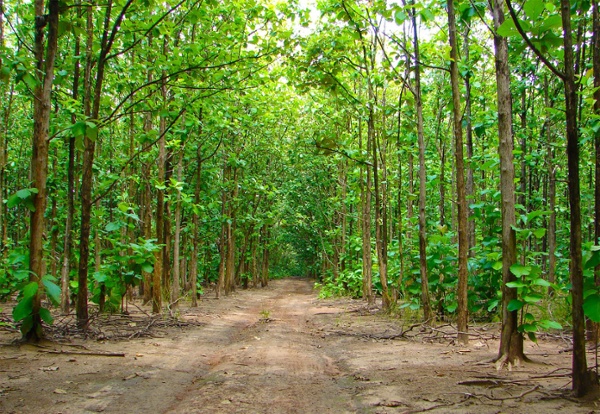
Demand for teak is on the rise, which is great news for timber investors. It’s a unique opportunity not just because teak is a natural resource, but because it has a steady history of demand and the potential for creating generational wealth.
Teak has in fact been a valued resource for centuries. Although it may originally be native to Asia, it is now grown across the globe and valued on an international scale.
That’s good news for people interested in owning teak, because teak plantations in Central America offer a lot of advantages.
The Benefits of Teak Ownership Unique to Central America
Throughout much of the world, teak plantations are owned and run exclusively by the government. Obviously, this means that everyday people are not invited to the table.
Fortunately, there are still some places around the world where individuals can be a part of the teak industry without having to go through an international government.
In Central and South America, governments only have a small percentage of teak ownership.
In South America, 99% of the teak industry is owned by private corporations. In Central America, that figure is closer to 88%.
In either case, there is plenty of room for those who wish to have the agricultural opportunities that teak offers.
That’s why people who want to take advantage of the benefits of teak ownership often choose to do so in a place like Central or South America.
Since teak grows so well in this particular part of the world, it is an obvious choice for those in search of savvy alternative investments in the hardwood market.
The Rising Global Demand for Hardwood Like Teak
Nothing in the stock market is ever a 100% guarantee. Nonetheless, there are some opportunities that are more stable and less volatile than others.
Notably, hardwood is a strong choice for those who are interested in a long-term investment with a distinct upward trajectory.
Unsurprisingly, the price of hardwood such as teak is tied directly to demand. When teak is in demand, the price will naturally rise.
And, despite the risk of new technologies and materials, hardwood remains a necessity in countless areas of life. When craftsmen choose to make solid, quality, lasting pieces, they gravitate toward materials such as teak.
Demand for hardwood also rises with population growth. The more people there are on the planet, the more people there are who demand materials like teak.
Drastic population rises in countries like China and India are a prime example of this. In both nations, the demand for teak is sky-high.
Currently, India is the primary importer of teak, and it also happens to be home to roughly 1.4 billion people.
In short, investing in teak is a stable choice as there will always be people around the globe who want to make, create, and build objects and structures.
Timber vs. The S&P 500
The S&P 500 measures the success of the largest companies on the stock market. Following the ups and downs of the S&P 500, therefore, is a fairly accurate way to see exactly how stocks, as an aggregate, are doing.
Many major investment types are measured against the performance of the S&P 500 to see how well they do when compared to the average stock returns.
In this respect, teak surpasses all expectations.
Since 1987, returns on teak opportunities have surpassed the returns of the S&P 500 by a staggering 50%. For most of the last 50 years, teak has seen a return of just over 8% year over year.
There are very few down years in recent history, not to mention a dwindling supply of the natural resource that will only drive up demand.
Teak historically outperforms stock averages and far surpasses rates of inflation, ensuring that people have plenty of financial incentive to own this hardwood.
Creating Generational Wealth Through Teak
There are clearly a number of reasons to take advantage of teak opportunities, but one that is often overlooked is the long-term viability of the asset. After all, there is a reason that some of the wealthiest individuals buy acres and acres of teak forest without any concern for immediate profits.
Teak, by definition, has to grow and mature before it can reach a stage where it is of value - just like any other trees on the planet. Teak reaches a stage of maturity after 25 years, but then again after 60 years.
Those who have the time and financial stability to let their teak plantation grow over time will be providing financial security for their dependents as well as themselves.
Whether you are concerned about the rising costs of college tuition or you want to add diversity to your portfolio, teak is an option that can offer plenty of long-term potential for the future.
Choosing Teak in Central America
If you are ready to take the next step with the agricultural opportunity in teak, you are certainly not alone.
The availability of privately-owned teak plantations in Central America, the impressive performance of teak over time, the growing demand on a global scale, and the long-term benefits of teak for building generational wealth all show the value of this opportunity.
Through Georgetown Trust, you can explore your options and find out how participating in a teak plantation may be the right choice for your financial future and security.
Whether you are interested in reducing volatility, diversifying your portfolio, or providing security for the next generation, teak may be the right solution.

